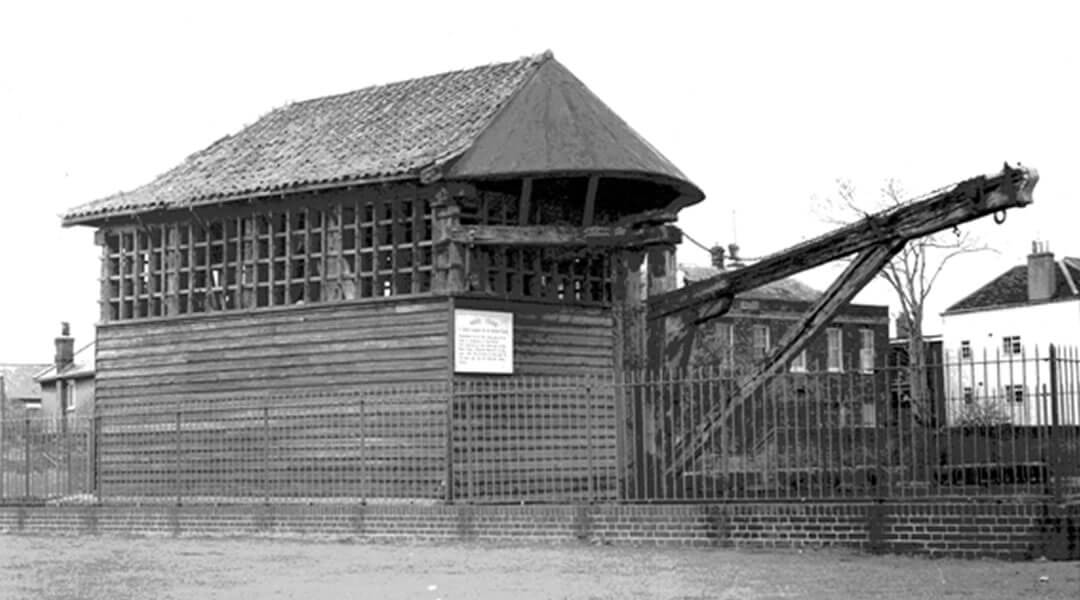In July 1927 the Naval Shipyard at Harwich was declared bankrupt and the yard left to deteriorate. Mr B. Carlyon-Hughes, a local gentleman undertook some research into the shipyard crane and decided it had been constructed in 1667 for the yard then known as the King’s Shipyard and had cost some £392. He provided the Harwich Borough Council with a case that this crane was unique and should be saved for the borough as a tribute to the countless men that had worked at the yard. The council agreed even though the case lacked concrete evidence and the crane was not illustrated on a 1713 drawing of the yard when the yard was released from naval ownership. They acquired the crane from the land’s freeholder, the Crown Estates Land & Revenue and using their own staff it was dismantled under the supervision of Council Engineer Mr Harold French in March 1930 and rebuilt on St Helen’s Green completing the rebuild in July 1930. The inside the house had been very dark so the upper weather boards were replaced by lattice framing.
The crane was so named as the mechanism was housed in an oak wood house. Inside were two 16 feet diameter, 3 feet six inches wide treadwheels four feet apart also made of oak. Two men would walk the treadwheels to raise and lower the jib. There were no brakes should the treadwheel run out of control a spar was levered against the outer edge of the wheel to slow it down. In 1915 the 13.5 inch diameter axial was replaced by one made from pinewood.
The story served the local community well until a party from the Institute of Archaeological at the University College, London visited the crane in May and June 1999 to undertake a dendrochronological study of the timbers. Their report dates timbers felled between 1739 and 1769 with the jib between 1792 and 1824. The structure of the wheel house was probably made by skilled naval carpenters, it has none of the features of contemporaneous domestic architecture therefore was almost certainly constructed by the yard’s own staff. The tie beams are halved to receive the top plates with the post being joined in reverse assembly. Inside the house behind the jib is inscribed the date 1799 which in line with the report’s date of construction.
In 1841 John Bagshaw went into partnership with John Robson Pattrick to import coal from the north east of England. The large store house at the north eastern corner of the yard was converted into a coal store and two purpose built cranes were constructed by the yard for this work. Mr Pattrick had a 32 ton purpose built barge, Primus, built at Ipswich for this trade.
It is unlikely though not proven that the crane on St Helen’s Green is not one of the two coal cranes which brings us back the inscribed date of 1799 as the crane’s true date of construction. When visiting Harwich it is suggested that visitors should asked the curators why they still insist the date of construction is 1667, where they researched their subject and why the Institute of Archaeology’s report has been suppressed and what evidence to they hold that the existing crane is even a replica of the 1667 crane.
